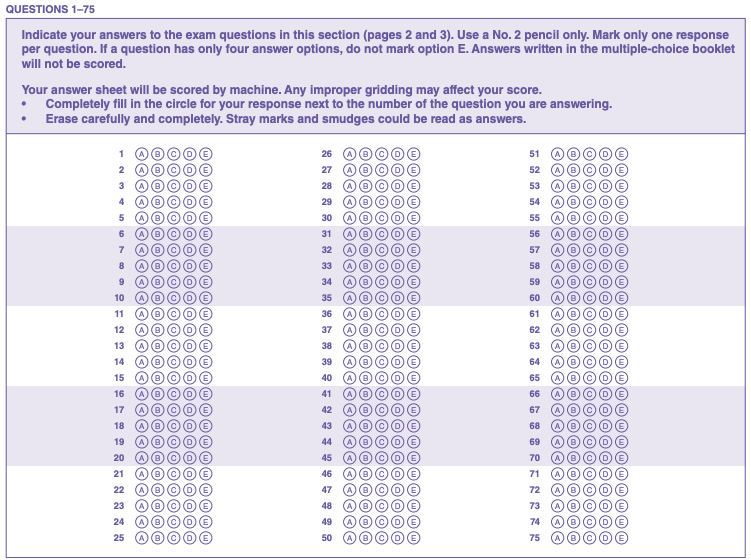How Can I Be Prepared for the AP European History Multiple Choice?
5 min read•july 11, 2024
Thomasina Lester
AP European History 🇪🇺
335 resourcesSee Units
The first section on the AP European History exam consists of multiple-choice questions. This section makes up 40% of your exam score, which means that learning how to conquer this style of question is crucial. You should familiarize yourself with the exam format and the questions that you're likely to see on the exam.
If you're looking to review content that will help you on this section, take a look at Fiveable's resources. Fiveable has a collection of live streams, study guides, trivia, and more to get you ready!
📋 Format and Question Types
The first type of question that you'll encounter on the AP European History exam is the classic multiple-choice question (MCQ). However, these MCQs aren't traditional; instead, they are stimulus-based. Stimulus-based MCQs require developed historical knowledge, but also the ability to interpret and analyze historical documents. You'll be provided with a source, which could take the form of a text, image, chart, or map, and asked to answer 3–4 questions based on that source.
You'll have 55 minutes to answer 55 questions, which works out to around a minute per question. Remember to account for the time that it takes to read and work with each source. It is important to be careful, yet efficient when analyzing the source and questions to ensure that you properly understand the material. Beware of the time limit.
You can only earn points; you can't lose points. This scoring system means that there is no penalty for guessing. Remember to answer every question. You might guess correctly and earn a point that you would have missed if you hadn't answered!
❓ Tips to Ace MCQs
1. Find a Pace That Works For You
If you do the math, you'll find that you have around 1 minute to answer 1 question. Don't get caught up in the precise timing.
Take the time to understand the source and its meaning, which will cut into the "minute per question," but will ultimately save you time in the end as you'll have the context necessary to answer each question. As you gain more experience in the section, you'll learn what system works best for you.
2. Don't Get Caught Up in the Order
Remember that you don't have to go in the order of the questions. Address the questions that you might feel the most comfortable answering first. This strategy allows you to answer the most questions in the least amount of time.
Then, you can go back and spend time working through the more difficult questions. If this technique doesn't work for you, that's okay as there are always alternatives! Sometimes, following the order of the questions can be helpful to stay on track and organized.
3. Look at Source Information and Questions
The information in the source, such as author, location, and date, can often be incredibly helpful. While you might want to get to the real source, remember to look at the straightforward content first!
A text might use complex language and a cartoon might have a convoluted message, but the basic details are typically easy to understand. You might even be able to answer a question solely based on the context of the source!
If you look at the questions before diving into the source, you're able to look for specific and relevant information that can help you select the correct answer. If you read the source before the associated questions, you might have to look back at the source multiple times before finding the necessary information. The described strategy can help to minimize that problem and cut down on wasted time!
4. Know When to Move On Or Guess
You've probably encountered a question that you don't know how to answer in your high school journey. You'll likely feel lost on a few questions on the AP exam, given the pressure of the time limit, and that's okay.
The important thing is to know when to move on to the next question. There is no need to spend all of your time on 1 question, especially when you could have answered 5 other questions in the same amount of time. Maximize the number of points that you could earn!
While it may seem strange, guessing can often be a good strategy. Of course, you shouldn't guess every question, but if you have 10 questions left to answer in 3 minutes, it might help you. Think about it: if you randomly answer those last questions, there's a chance that a few of those answers are correct. If you left those blank, there is no possibility to earn any points for those questions. Develop a strategy!
5. Know How to Fill Out the Answer Sheet
It might seem obvious, but know how to record your answers. When you take the real AP exam, you'll be given a typical multiple-choice answer sheet. The circles that you fill in on the answer sheet are the ones that count!

You'll see an answer sheet similar to the one above on the AP exam. Image Courtesy of The College Board
✏️ Sample Question

Image Courtesy of The College Board
Try to answer this sample question with your newfound knowledge!
➕ Additional Resources
Unfortunately, publicly accessible practice exams for the MCQ section of the AP exam are limited. You'll have the most success if you ask your teacher, if possible, for more resources that they have permission to use.
AP Classroom provides many realistic practice MCQs, if you're looking for official resources. Many textbooks and prep books create their own practice MCQs, but there is no way to validate the accuracy of those questions.
⭐ Words of Encouragement
Don't feel discouraged if you struggle with the MCQ format that is used on the AP exam. Remember that practice makes perfect, especially when you're consistent. As you work through more real examples, you'll begin to understand how to appropriately tackle different questions.
Familiarize yourself with a variety of styles, and don't get comfortable with only one style. You've got this and good luck!
Browse Study Guides By Unit
🎨Unit 1 – Renaissance & Exploration
⛪️Unit 2 – Reformation
👑Unit 3 – Absolutism & Constitutionalism
🤔Unit 4 – Scientific, Philosophical, & Political Developments
🥖Unit 5 – Conflict, Crisis, & Reaction in the Late 18th Century
🚂Unit 6 – Industrialization & Its Effects
✊Unit 7 – 19th Century Perspectives & Political Developments
💣Unit 8 – 20th Century Global Conflicts
🥶Unit 9 – Cold War & Contemporary Europe
📚Study Tools
🤔Exam Skills
👉Subject Guides

Fiveable
Resources
© 2025 Fiveable Inc. All rights reserved.